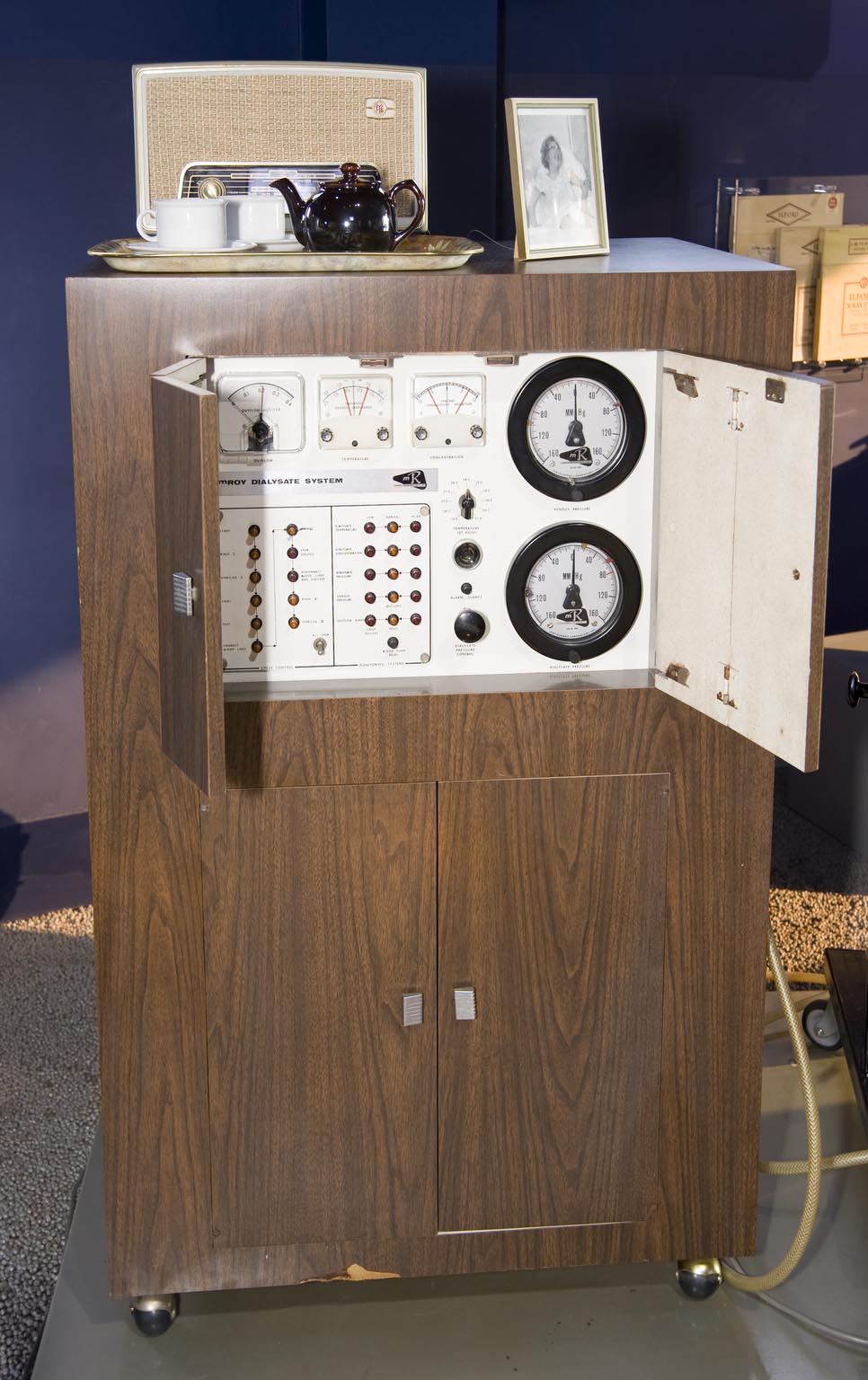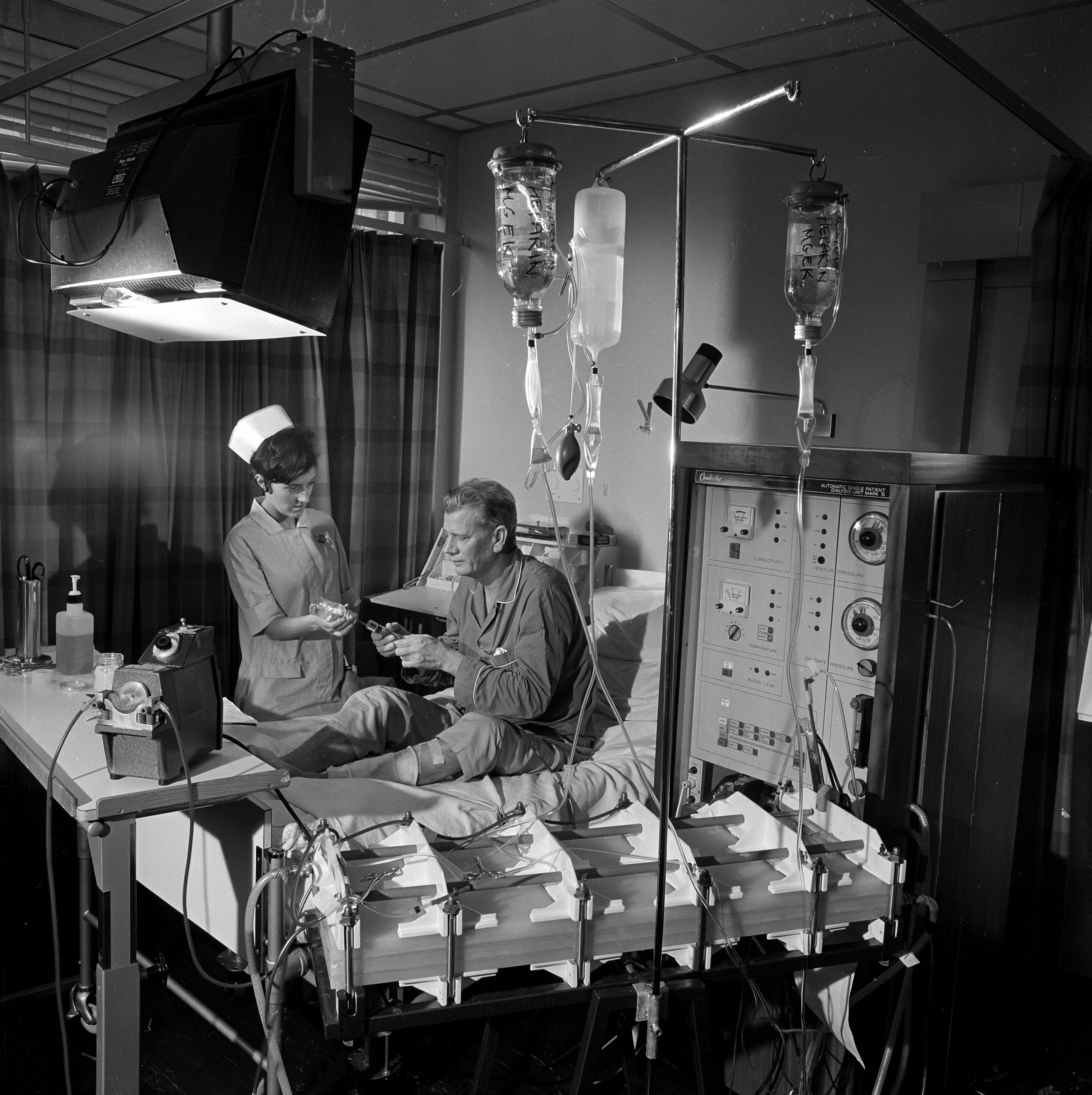With a medical collection totaling close to 150,000 objects, there remains a great deal to learn about almost every artefact in the Science Museum’s care. Despite the continued research efforts of our curatorial team, the historical story of an object can often be tantalisingly obscured. Understanding the history of an object is not a simple, linear process; each one has multiple stories and questions connected with it, and numerous potential angles for interpretation.
Take this object for an example. We already know a great deal about what it is, how it was used, and who owned it. However, there is a further level of detail that we wish to gain about the artefact- namely the experience associated with its therapeutic use.

This is a Milton Roy kidney machine, built for the treatment of patients with renal failure, via home based dialysis. When a person’s kidney’s fail, waste products cannot be removed from their blood. Dialysis machines such as this artificially filter the blood and ensure serious illness is adverted.
We know that this machine belonged to a lady called Moreen Lewis, who nicknamed it “Dr. Who”, and used it from 1966 until her death in 1976. The machine and associated treatments cost £7,000, a huge sum of money for the time, costing twice the amount of an average family home.
Much of what we know about this artefact and Moreen comes as a result of a book written by Keith Bill, called Plug in For Life. The book detailed Moreen’s life and the context of kidney treatment in 1960’s Britain. Further information on the machine was also provided by Moreen’s mother, Charlotte Lewis, who donated it to the Science Museum in 1977.
The machine is a significant part of the Museum’s medical collections as it represents one of the very earliest examples of home dialysis equipment. It also represents a moment of change in the treatment of kidney disease, placing patients like Moreen at the frontier of an expensive and experimental medical development. The costs associated with these dialysis machines meant that 1960’s renal units, funded by the National Health Service, were rare, small and rigorously selective. A unit was established at the Royal Free Hospital, London in 1961.

The failure to secure Moreen treatment on the NHS meant that private funds had to be found. The costs for treatment at the private National Kidney Centre in Finchley, London were met by Moreen’s uncle, this included the cost of the machine as well as the necessary training and support to successfully use the machine in her home. We also know that Moreen’s treatment was supported by a large network of friends, including those from the Suffolks Baptist Church in Enfield.
We are keen to build upon this knowledge and include the story of Moreen and her dialysis machine in a forthcoming redisplay of our medical collections. We are especially hopeful of uncovering some images of Moreen, so that they can support our gallery content. We are hoping to hear from people who may have known Moreen or her family, and can provide us with more detail about the everyday experience of using the machine.
We would also be keen to hear from any individuals, who have experience of using a Milton Roy machine such as the one Moreen used.
Perhaps you or a family member were a patient at the National Kidney Centre alongside Moreen? Maybe you attended the Suffolks Baptist Church like Moreen and her mother, or perhaps you were part of her wider group of friends?
Any further light you, or someone close to you, could shed on Moreen, this object and her experience of it in use, would be greatly received.
For more information about how to get in touch with us click here.